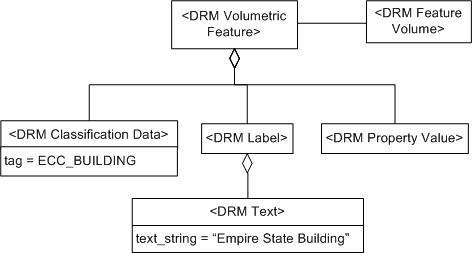-
When are <Feature Volume> instances required?
<Feature Volume> instances are
required whenever there are
<Volumetric Feature> instances,
regardless of the feature topology level.
-
Are there any geometric constraints on
<Feature Volume> instances?
Yes. <Feature Volume> instances
must always have closed external boundaries, and their
interiors must be fully connected. At feature topology
level 5, the interiors of
<Feature Volume> instances may
not intersect or overlap one another, and
<Feature Volume> instances may
meet only along one or more common
<Feature Face> instances.
-
Can <Feature Volume> instances
exist at any feature topology level?
Yes. <Feature Volume> instances
may exist at any feature topology level in order to define
the extents of <Volumetric Feature>
instances. At feature topology level 5, the collection of
<Feature Volume> instances must
exhaustively and exclusively partition the 3-dimensional
topological space, such that exactly two
<Feature Volume> instances
shall be bounded by each <Feature Face>
instance.
-
Looking at the relationships allowed for
<Feature Topology> instances, we
note that the <Feature Node> to
<Feature Node> association, and
the <Feature Edge> to
<Feature Edge> association are "many to
many", while the <Feature Face>
to <Feature Face> association is
"optional to optional". Why is there no corresponding
association between <Feature Volume>
instances?
These associations exist to support cross-tile topology. This
refers to topological relationships that cross multiple branches
below a
<Spatial Index Related Features>
instance,
a <Spatial Index Related Feature Topology>
instance,
a <Perimeter Related Features>
instance, or a
<Perimeter Related Feature Topology>
instance.
<Feature Node> instances,
<Feature Edge> instances, and, in 3D,
<Feature Face> instances can be
located on the boundary of a tile. When this happens, they have
"counterparts" in each of the adjacent tiles that share the
boundary. These associations allow
<Feature Node> instances,
<Feature Edge> instances, and
<Feature Face> instances to identify their
counterparts, if any.
In 2D,
-
tile boundary <Feature Node> instances
come in pairs, unless they're located at a corner where four tiles
meet,
-
tile boundary <Feature Edge> instances
always come in pairs,
-
<Feature Face> instances are
always contained within a single tile.
In 3D,
